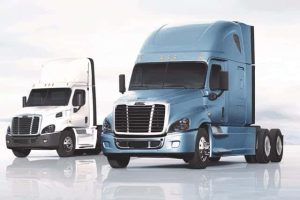Consumers Want Savings from Better Fuel Efficiency in Large Trucks
Fuel efficiency in large trucks isn’t something that concerns only truck manufacturers and owners. Consumers also pay for fuel indirectly, through higher prices for goods. No wonder three-quarters of Americans say they want manufacturers to find ways to increase fuel efficiency in large trucks.
 The American Trucking Associations (ATA) is quick to note, however, that new technologies designed to provide better fuel economy come with a hefty up-front price tag for truck buyers. Owners have to be able to capture a return on that investment, and 97% of trucking companies are small businesses.
The American Trucking Associations (ATA) is quick to note, however, that new technologies designed to provide better fuel economy come with a hefty up-front price tag for truck buyers. Owners have to be able to capture a return on that investment, and 97% of trucking companies are small businesses.
For the vast majority of trucking firms, fuel represents their highest operating expense. Fuel accounts for about 39% of the cost of moving goods. In a report released earlier this year, the group suggests an average American household is spending $1,100 per year in higher prices to help pay for inefficient trucks. They estimate a 50% improvement in fuel efficiency would save each household approximately $250.
New gasoline standards for all vehicles by 2017.
Under mandate from President Obama, the Department of Transportation and the Environmental Protection Agency are working to update both fuel-efficiency and greenhouse gas emissions standards for medium- and heavy-duty vehicles by March 2016. But the EPA’s Tier 3 gasoline sulfur standards program includes more than just large trucks. It is also aimed at reducing tailpipe and evaporative emissions from passenger cars, light-duty trucks and medium-duty passenger vehicles.
Along with new vehicle emission requirements, the program will institute lower sulfur content standards as of 2017. The EPA says these new standards will not only improve air quality, they will improve the effectiveness of emissions control systems. The EPA projects costs associated with the new gasoline sulfur requirements to run less than one cent per gallon and about $72 per vehicle.
What’s the payback?
The Consumer Federation of America claims the payback period should be very short, because truckers can “dramatically offset” the additional expense associated with new requirements for emissions technologies and fuel content with lower operating costs due to reduced fuel consumption.
But the ATA says those in the trucking industry hope for more “economically achievable” new standards, because earlier regulations aimed at reducing emissions have been so costly for heavy-duty truck owners.
Glen Kedzie, energy and environmental counsel for the ATA, says “2007 emission standards increased the cost of a new truck by $10,000. In 2010, they increased the cost of a truck by another $10,000.” Diesel emissions may now be at near-zero levels, but he says truck owners have not seen much ROI on that yet. While they are anxious to increase fuel efficiency and cut fuel costs, he says, they need a reasonable return in order to stay in business.
